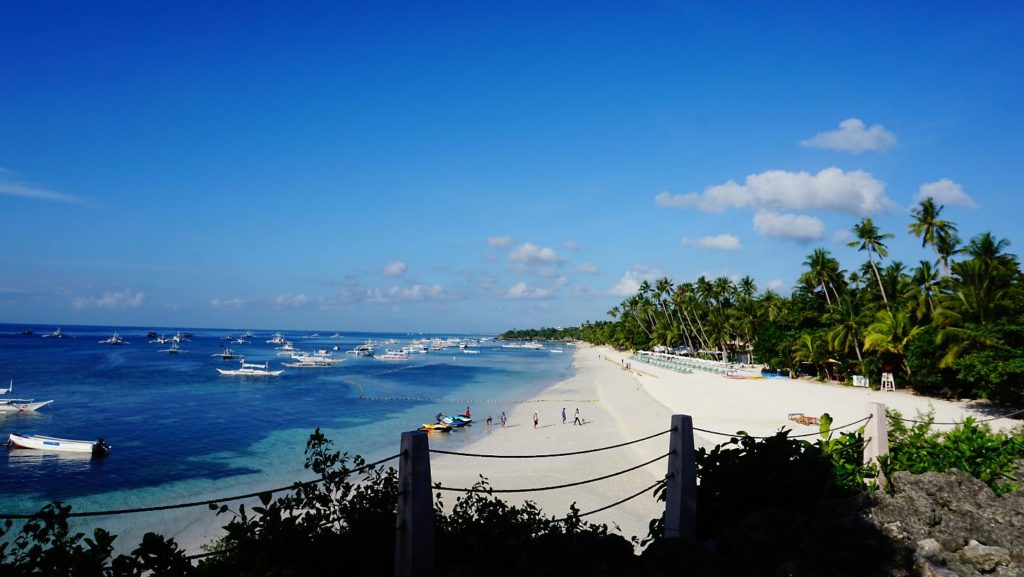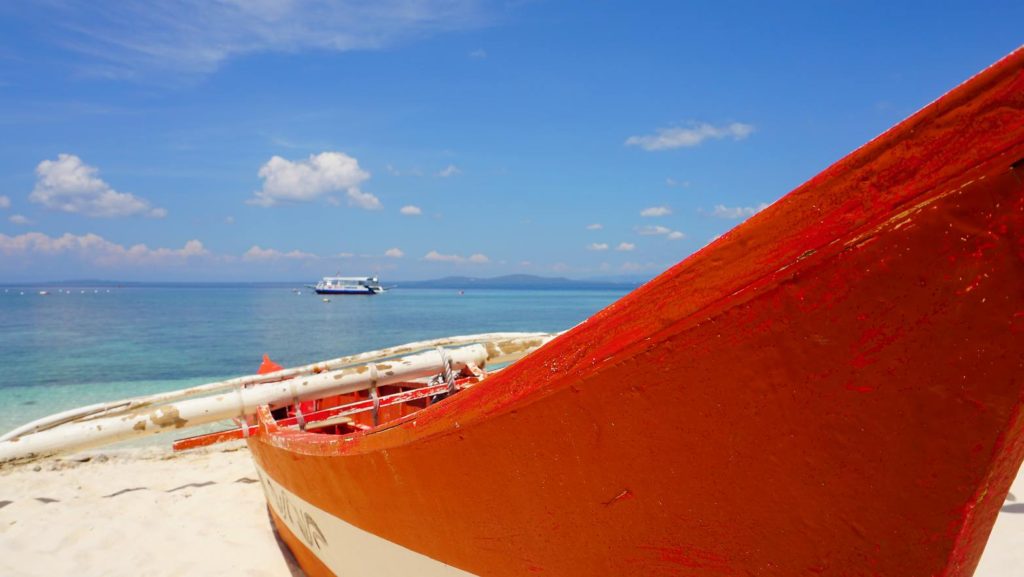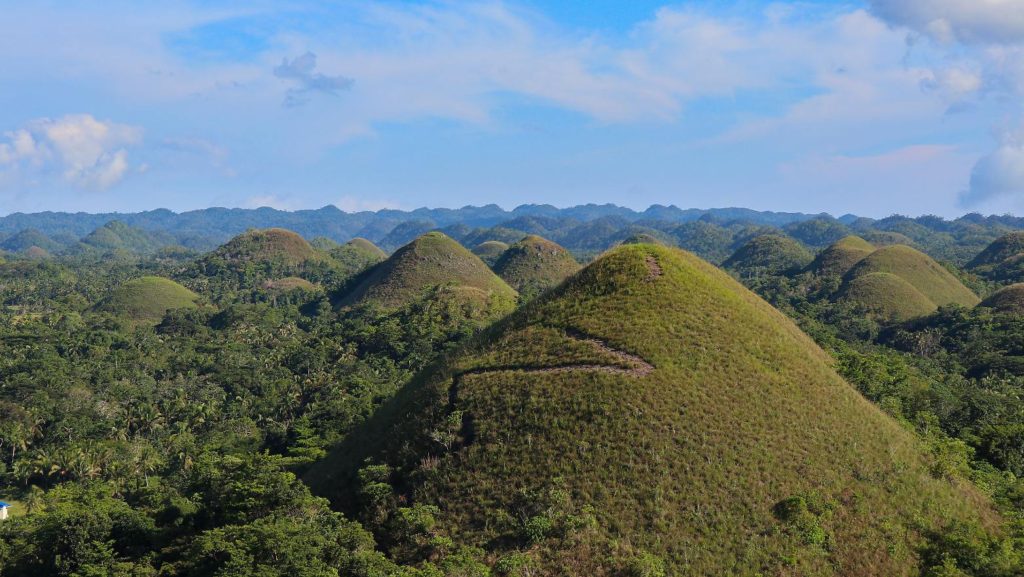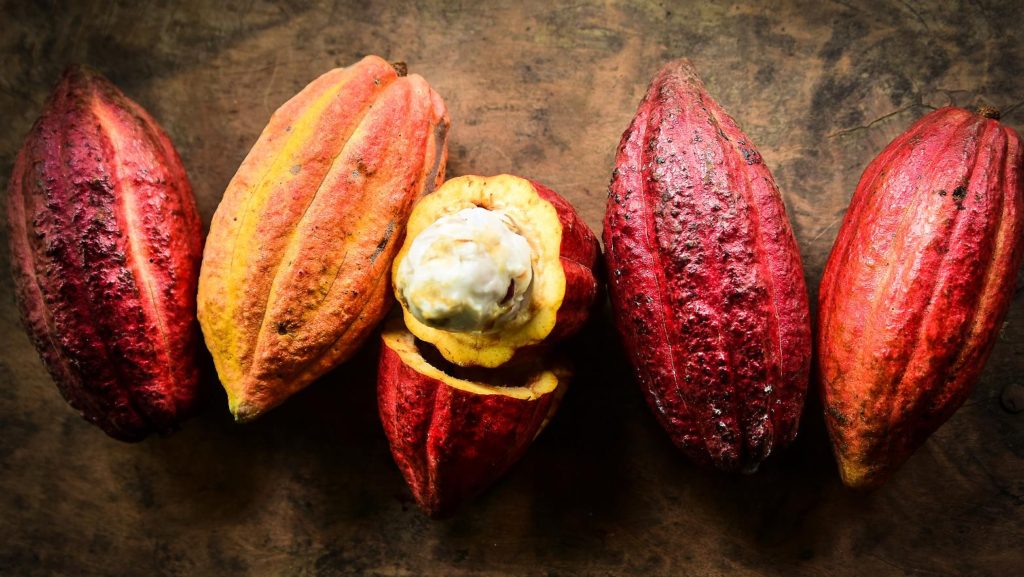On the Philippine islands of Bohol, Panglao and Pamilacan, one gets quite close to the feeling of paradise. There are white beaches, volcanoes and a sea that is not blue but full of life. And of course cocoa.
The last days of Tagbilaran Airport on Bohol are no more chaotic than usual. In front of the old building, it shows where it hooks: it could also pass through as a bus station. There is a jumble of taxis, buses, tricyle tricycles and colorful Jeepneys, the shared taxis. The Filipinos take the permanent jam with a smile. Scolding useless, “just go with the flow”.
Since December, the airport has been history. 21 kilometers away, the new eco-airport has opened on the neighboring island of Panglao after an eight-year construction period. The airport is supposed to handle up to two million tourists a year and is already the pride of the region. He is “green” because of a sewage disposal and rainwater collection system. A solar park covers 30 percent of the energy requirement.
So now tourists land in the middle of the island paradise. Panglao belongs to the province Bohol and the archipelago Visayas. Here, no one steps on their feet, the tourists spread easily over the many islands of the southeastern province. In total, the Philippine archipelago consists of 7641 islands.

As far as the eye can see, the palm-fringed beaches stretch bright white. To keep it that way, the local hoteliers have made sure that no resort or hotel can be built higher than six floors. Especially Rommel T. Gonzales from the Bellevue Resort got involved. “We do not want beds here,” explains the hotelier.
Snorkeling in precious waters
Just a short boat ride away is the islet of Pamilacan. Here, the world’s most species-rich waters await divers and snorkelers. They rave about the green turtles, anemones, corals and colorful iridescent fish. In the past, the approximately 2,000 inhabitants of Pamilacan lived from whaling, which has been banned since 1992. Therefore, the government let them retrain. Today they protect the marine park and accompany the visitors through the precious waters. The editions are strict: Under no circumstances should hands or feet touch the corals.

Who does not want to dive into the ocean, can go into the hands of Patring Luza, until the senses dwindle. The 59-year-old is not only the chef in the small island restaurant, she is also a trained masseuse. When comparing the backs of this world, she states: “The Russians are the most strained.” And the Germans? “They fall asleep after five minutes,” Patring smiles and puts his hand on.
Awake again, it’s time for the legendary Chocolate Hills in central Bohol. As a natural sight, the hills stand out on the seal and flag of the province. The grassy, weird cones turn brown in the dry period. As a result, they look like chocolate in April and May.
Where two giants beat each other

The first visitors are rushing down the stairs on the 200 steps to the viewing platform. They want to have lunch on the Loboc River, a well-booked package with a one-hour boat ride and singing through tropical climes. Once at the top, the magic hills look like man-made shapes.
Nature has left an eternal puzzle here: How did these 1268 cones come about? Geologists suspect something of everything: ancient times, a submarine volcano spat out various rocks, which were covered with limestone and finally heaved by thermal force into the air. Legends also entwine themselves around the hills. The children are told the version of the two giants. They got into a bad fight and threw themselves to exhaustion with big stones. But the fight remained undecided, the two made friends and went home – but without clearing up first.
Success story of chocolate
The Chocolate Hills have also inspired Dalarich Polot from Tagbilaran. And her life changes. The young entrepreneur can be found near the old airport. Here she leads with her parents the first and only chocolate factory of the Philippines, including a modern sales and showroom. The petite woman has made a success story out of her country’s so far ignored resource: “Cocoa grows everywhere, people have the gold in their garden, they just do not know, the old people suck the beans around and spit out the best” , she tells. The processing of the beans to noble chocolate simply had no tradition.

Her success is a success for her entire family. Dalareich comes from the poorest conditions: The father did not deserve much as a tricyle driver, the mother was a street cleaner. In order for the children to study, she made a profit by selling unsweetened raw chocolate. With a scholarship Dalareich was finally educated in Belgium to Chocolatiére, came back and purposefully expanded their business model.
Meanwhile, she makes a good deal with her chocolates and chocolates and receives international awards. Even the compatriots have become clairaudient and now take care of the gold of their gardens: “The Filipinos are sweet-toothed,” says Dalareich. In this way, it is steadily increasing the circle of its regional suppliers who also benefit from it. Above all, in the face of poverty, she is enthusiastic that “there is money in this kind of agriculture”. “Ginto” – gold, that’s the name of the bestseller in their range. In the future, she wants to market the chocolates from all Philippine islands, because “every island has its own taste”. And you can even take it home.

